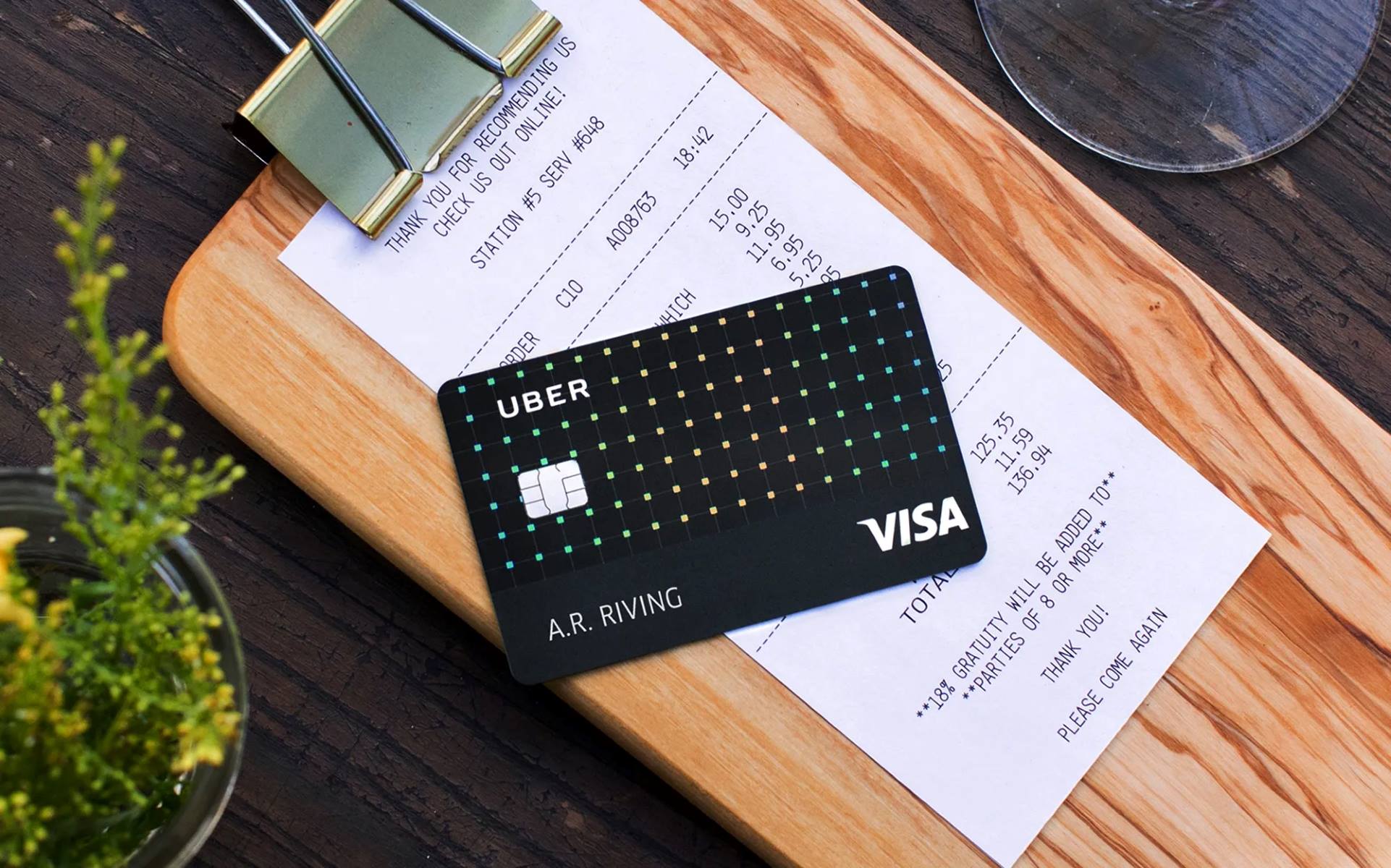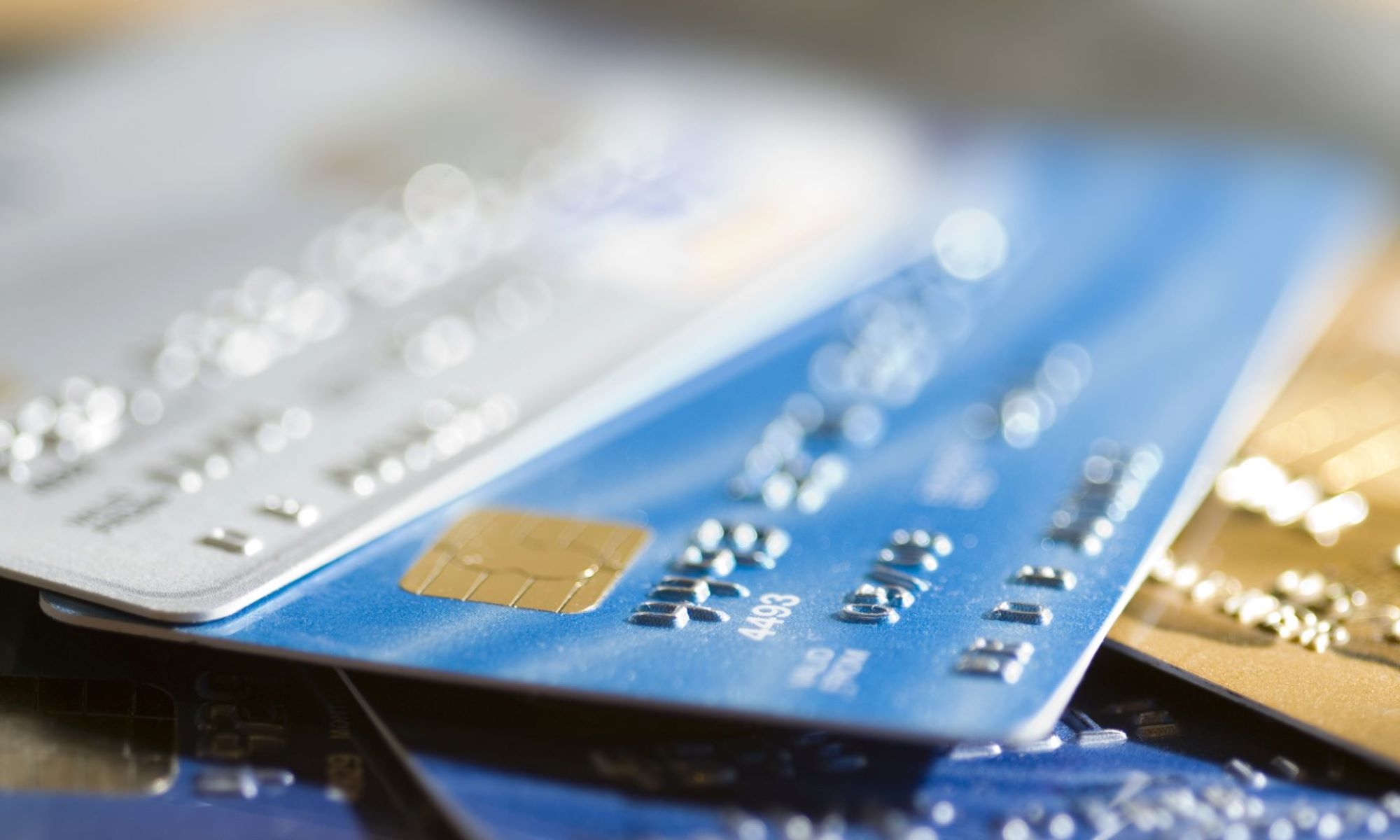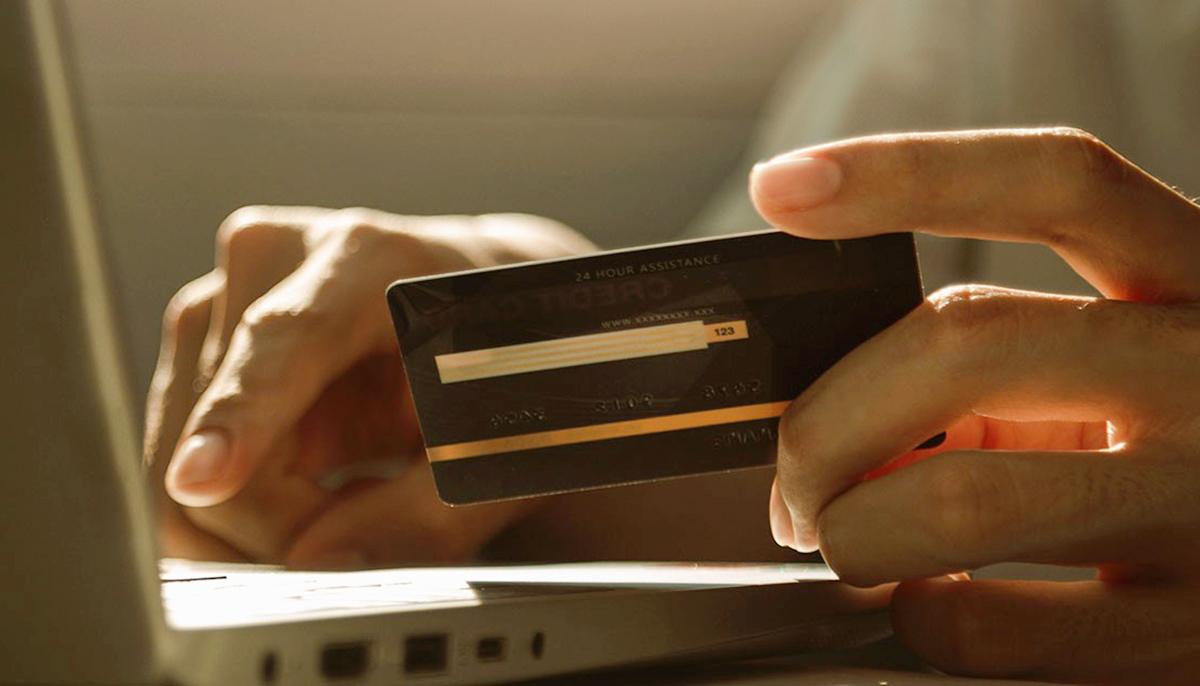

Finance
How To Sign Back Of Credit Card
Published: October 24, 2023
Learn how to sign the back of your credit card to protect your finances and prevent unauthorized use. Follow our step-by-step guide for a secure and hassle-free process.
(Many of the links in this article redirect to a specific reviewed product. Your purchase of these products through affiliate links helps to generate commission for LiveWell, at no extra cost. Learn more)
Table of Contents
- Introduction
- Why is it important to sign the back of your credit card?
- Step-by-step guide to signing the back of your credit card
- Tips for signing your credit card securely
- What to do if you have already signed your card but it got erased or damaged
- Alternatives to signing the back of your credit card
- Pros and cons of signing the back of your credit card
- Conclusion
Introduction
Welcome to our comprehensive guide on how to sign the back of your credit card. While it may seem like a mundane task, signing the back of your credit card is a crucial step in protecting your financial information and preventing fraud. In this article, we will explain why it’s important to sign your credit card, provide a step-by-step guide on how to do it correctly, offer tips for signing securely, discuss what to do if your signature gets erased or damaged, explore alternatives to signing, and weigh the pros and cons of signing the back of your credit card.
With the rise of digital payments and contactless transactions, some might question the significance of signing a physical credit card. However, it’s important to remember that not all merchants accept these newer payment methods. Physical credit cards continue to be widely used, and your signature serves as a crucial form of identification and verification.
By signing the back of your credit card, you are creating a binding agreement with the card issuer and the merchant. It protects you from unauthorized use and creates a legal obligation for the card issuer to accept the card as a valid form of payment. Additionally, your signature on the card can help merchants verify the card’s authenticity, reducing the risk of fraudulent transactions.
Unfortunately, failing to sign the back of your credit card can have serious consequences. Without a signature, anyone who comes into possession of your card could potentially use it for unauthorized purchases. Moreover, if a merchant asks for your signature during a transaction and realizes that the card is not signed, they may refuse to accept the card as a valid form of payment, causing inconveniences and frustrating situations.
In the following sections, we will guide you through the process of signing your credit card properly, provide helpful tips to ensure a secure signature, and explore alternative options if you are hesitant about signing the back of your card. Let’s dive in!
Why is it important to sign the back of your credit card?
Signing the back of your credit card is a crucial step in protecting your financial information and preventing fraud. Here are several reasons why it is important to sign the back of your credit card:
- Verification: When you sign the back of your credit card, it serves as a form of verification to merchants that the card belongs to you. It is a visual confirmation for them that you are the authorized cardholder.
- Legal protection: By signing the back of your credit card, you are entering into a legally binding agreement with the card issuer and the merchant. This means that you are agreeing to the terms and conditions set by the card issuer, and it provides a layer of legal protection should any disputes or unauthorized transactions occur.
- Merchant acceptance: Many merchants require a signed credit card as a measure of security and to prevent fraud. Without a signature, merchants may refuse to accept the card as a valid form of payment. By signing your credit card, you ensure that it is widely accepted and usable in various establishments.
- Identity confirmation: Your signature on the back of your credit card adds an extra layer of security by providing a means of verifying your identity. It helps protect against unauthorized individuals attempting to use your card for fraudulent purposes.
- Fraud prevention: Signing the back of your credit card helps deter potential fraudsters. If a thief were to steal your card, they would need to forge your signature to use it successfully, making it more challenging for them to make unauthorized purchases.
While some may argue that the rise of chip-and-PIN technology and contactless payments have reduced the importance of a signature, it is important to note that not all merchants have upgraded their payment terminals to accept these newer methods. Additionally, signature verification can still act as an additional layer of security in situations where chip-and-PIN or contactless payments are not available or required.
In the next section, we will guide you through the step-by-step process of signing the back of your credit card to ensure that your signature is secure and properly executed.
Step-by-step guide to signing the back of your credit card
Signing the back of your credit card is a simple process that can be done in a few easy steps. Follow this step-by-step guide to ensure that you sign your credit card correctly:
- Gather your credit card: Locate your credit card and ensure that you have a pen or marker available for signing.
- Choose a suitable writing instrument: Use a pen or a permanent marker to sign the back of your credit card. Avoid using a pencil as it can easily smudge or fade over time.
- Find the designated signature panel: Flip your credit card over and look for a designated area labeled “Authorized Signature” or a line where you are instructed to sign.
- Prepare the surface: If your credit card has a shiny or glossy surface, you may want to use a dry cloth to wipe it clean before signing. This will ensure that the pen or marker adheres properly to the card surface.
- Take your time and sign your name: Using a steady hand, sign your name on the designated signature panel. Use your usual signature or the same signature you use for your legal documents to ensure consistency.
- Allow the ink to dry completely: It is essential to let the ink on your signature dry completely before placing the card in your wallet or using it for transactions. This will prevent smudging and ensure the longevity of your signature.
- Review your signature: Take a moment to review the signature you have just written. Make sure it is legible and resembles your usual signature. If necessary, you can practice signing your name on a separate piece of paper before signing the actual card.
- Repeat the process for additional cards: If you have multiple credit cards, repeat the steps above for each card. Ensure that you sign the back of every card to maintain consistency and comply with merchant requirements.
By following these steps, you can confidently and securely sign the back of your credit card, providing merchants with a valid and recognizable signature for verification purposes.
In the next section, we will provide you with essential tips to consider when signing your credit card to ensure maximum security and protection against fraud.
Tips for signing your credit card securely
When signing the back of your credit card, it is important to take certain precautions to ensure maximum security and protect your personal information. Here are some essential tips for signing your credit card securely:
- Use a legible signature: Make sure your signature is clear and legible. Avoid scribbling or using overly complex signatures that may be difficult for merchants to verify.
- Sign with a permanent marker: Use a permanent marker instead of a regular pen to sign the back of your card. This helps prevent your signature from fading or smudging over time.
- Avoid leaving blank spaces: Ensure that your signature covers the entire designated area. Leaving blank spaces can give room for fraudulent individuals to alter or add information to your card.
- Consider using a stylus or digital signature: If your credit card has a touchscreen or supports a digital signature, you can opt to sign electronically using a stylus or your finger. Digital signatures provide an added layer of security and can be more difficult to replicate or forge.
- Do not use easily replicable or predictable signatures: Avoid using common, easily replicable signatures like simple initials or generic patterns. Opt for a unique and distinct signature that cannot be easily imitated.
- Protect your signature from erasure: Once you’ve signed your card, take steps to protect your signature from accidental erasure. Avoid placing adhesive labels or stickers over the signature panel, as they can be easily removed, exposing your signature.
- Regularly check the condition of your signature: Periodically examine the back of your credit card to ensure that your signature is intact and legible. If your signature becomes faded or partially erased, consider contacting your card issuer to request a replacement card.
- Notify your card issuer of any changes: If you legally change your name, update your signature accordingly. Additionally, inform your card issuer if you need to update your signature due to a change in your handwriting or other reasons.
- Keep your credit card secure: Always keep your credit card in a safe and secure place, away from unauthorized individuals. Never leave your card unattended or share your card details, including your signature, with anyone you do not trust.
- Be cautious when signing in public: Exercise caution when signing your credit card in public. Shield your card and signature with your hand or body to prevent others from seeing or capturing your signature.
By following these tips, you can enhance the security of your credit card signature, reduce the risk of identity theft or fraud, and maintain peace of mind when using your card.
In the next section, we will discuss what you should do if you have already signed your card but the signature gets erased or damaged.
What to do if you have already signed your card but it got erased or damaged
It can be frustrating and concerning if the signature on the back of your credit card gets erased or damaged. However, there are steps you can take to rectify the situation and ensure the security of your credit card. Here’s what you should do if you have already signed your card, but the signature gets erased or damaged:
- Contact your card issuer: Reach out to your credit card issuer as soon as you notice that your signature has been erased or damaged. They will provide guidance on the necessary steps to take, such as requesting a replacement card or updating your signature on file.
- Request a new card: If your signature is completely erased or illegible, consider requesting a new credit card. Your card issuer will deactivate the old card and issue a new one with a fresh signature panel. This ensures that your new card is properly signed and ready for use.
- Protect your card while awaiting a replacement: In the meantime, it is crucial to protect your card and prevent unauthorized use. Keep your damaged card in a safe place and avoid using it for transactions until you receive the replacement card.
- Update your signature: If you still have access to your damaged card, you can try to re-sign the back of the card using a permanent marker. Make sure your signature is legible and covers the entire designated area. However, keep in mind that the card issuer may still request a replacement card for security purposes.
- Securely dispose of the damaged card: Once you receive the replacement card, securely dispose of the damaged card. Cut it into pieces or shred it to prevent anyone from misusing or accessing your personal information.
- Update your signature with other institutions: If you have used your credit card for automatic payments or linked it to other accounts, such as online shopping platforms, make sure to update your signature information with those institutions to ensure a seamless transition.
Remember, it is crucial to act quickly and communicate with your card issuer when your signature gets erased or damaged. They can provide personalized guidance and protect your account from potential unauthorized use.
In the next section, we will explore alternatives to signing the back of your credit card for those who are hesitant or prefer a different approach.
Alternatives to signing the back of your credit card
While signing the back of your credit card is generally the recommended practice, there are alternative methods you can consider if you are hesitant to sign or prefer a different approach. Here are some alternatives to signing the back of your credit card:
- Write “See ID” instead of signing: Instead of signing the back of your credit card, you can write “See ID” in the signature panel. This indicates to merchants that they should check your identification before accepting the card as a form of payment. However, it’s important to note that not all merchants are required to check your ID, so this method may not provide foolproof security.
- Use a digital signature: If your credit card supports digital signatures or has a touchscreen, you may have the option to sign electronically using a stylus or your finger. Digital signatures can provide an added layer of security as they can be more difficult to replicate or forge compared to traditional signatures.
- Use a personal design or symbol: Instead of signing your name, you can create a unique design or choose a symbol that represents you. While this may not provide the same level of verification as a signature, it can still serve as a distinguishing mark and offer a personal touch.
- Enable biometric verification: Some credit cards and payment methods offer biometric verification options, such as fingerprint or facial recognition. By linking your biometric data to your card, you can authenticate transactions using these methods instead of a signature.
- Consider a digital wallet: Digital wallet services, such as Apple Pay, Google Pay, or Samsung Pay, offer secure payment options that do not require a physical card or signature. These services tokenize your card information and use encryption to ensure the safety of your transactions.
It’s important to note that while these alternatives may provide some flexibility or convenience, they may not be universally accepted by all merchants. Some may still require a physical signature for verification purposes. Therefore, it’s advisable to check with the merchant beforehand or carry an alternative payment method, such as a backup card or cash.
Ultimately, the decision to sign the back of your credit card or explore alternatives depends on your personal comfort level and the acceptance policies of the places where you frequently use your card.
In the next section, we will discuss the pros and cons of signing the back of your credit card to help you make an informed decision.
Pros and cons of signing the back of your credit card
Signing the back of your credit card is a common practice, but it’s important to weigh the pros and cons before making a decision. Here are the potential advantages and disadvantages of signing the back of your credit card:
Pros:
- Identification and verification: A signed credit card provides a means of identification and verification for both merchants and card issuers, confirming that you are the authorized cardholder.
- Legal protection: Signing the back of your credit card creates a legally binding agreement between you, the card issuer, and the merchant. This can offer you protection in case of disputes or unauthorized transactions.
- Merchant acceptance: Many merchants require a signature as a security measure to prevent fraud and ensure the validity of the card. By signing the back of your credit card, you increase the likelihood of it being accepted as a valid form of payment.
- Reduced risk of unauthorized use: A signature on the back of your credit card acts as a deterrent for unauthorized individuals who may attempt to use your card fraudulently. It adds an extra layer of security by requiring them to forge your signature.
Cons:
- Potential for fraudulent use: If your signed credit card falls into the wrong hands, the thief can attempt to replicate your signature or forge fraudulent transactions. However, the risk can be minimized with proper vigilance and protection measures.
- Limited acceptance of alternative payment methods: Some merchants may only accept physical credit cards or require a signature as a form of verification. Not signing the back of your credit card or using alternative methods may limit your payment options in certain establishments.
- Signature exposure: When you sign the back of your credit card, your signature becomes visible to anyone who handles your card, potentially compromising your privacy. However, the risk of signature exposure can be mitigated by handling your card responsibly and securely.
- Limited personalization options: Signing your credit card traditionally involves using your signature, limiting personalization options. If you prefer a more unique or creative approach, exploring alternative methods may be more desirable.
Ultimately, signing the back of your credit card comes with several benefits, such as identification, protection, and increased merchant acceptance. However, it’s essential to consider the potential risks and weigh them against your personal preferences and comfort level.
In the final section, we will conclude our guide on signing the back of your credit card and emphasize the importance of taking appropriate measures to protect your financial information.
Conclusion
Signing the back of your credit card plays a vital role in protecting your financial information and preventing unauthorized use. It serves as a form of identification, establishes a legal agreement, and enhances merchant acceptance. By following a simple step-by-step process, you can ensure that your signature is secure and legible.
While there are alternatives to signing, such as writing “See ID” or using digital signatures, it’s important to consider the acceptance policies of merchants and the level of convenience and security these alternatives provide. Ultimately, signing the back of your credit card offers a widely recognized and accepted method of verification.
Remember to take precautions to protect your signature, such as using a permanent marker, avoiding blank spaces, and regularly reviewing the condition of your signature. In the event that your signature gets erased or damaged, notify your card issuer promptly to request a replacement card.
Lastly, weighing the pros and cons of signing the back of your credit card is important. While there are potential risks associated with signature exposure and fraudulent use, they can be mitigated by practicing responsible card handling and staying vigilant.
By signing the back of your credit card, you are taking a proactive step in safeguarding your financial information. It provides peace of mind, protects against unauthorized transactions, and ensures a smooth payment experience. So grab a pen or marker, follow our guide, and sign the back of your credit card to create a secure and confident connection between you, your card issuer, and merchants.














